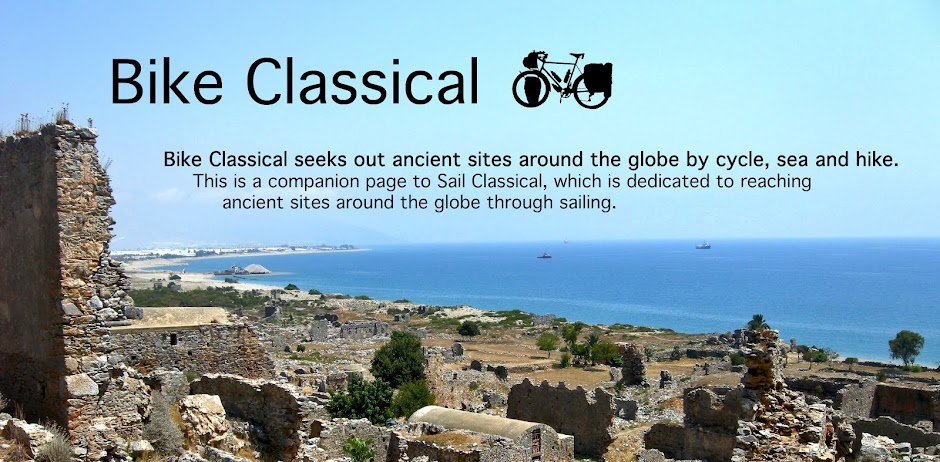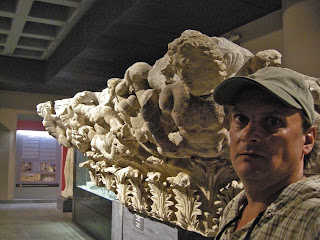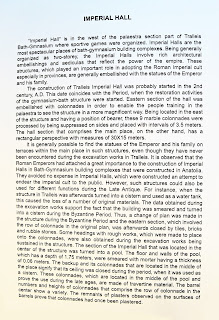Photos by Jack A. Waldron
According to Strabo, Tralles in Caria was founded by colonists from Argos, Peloponnese, and Trallians, a barbarian tribe from Thrace. Following the Peloponnesian War, Sparta looked to take control of Asia Minor and the cities under the wing of Athens or those controlled by Persia. Tralles was one these cities, however, Sparta failed in its attempt to win the city from Persia.
When I arrived at the site some high school boys were having a picnic at one of the bases of the Monumental Hellenistic Arch (pictured above and below), which served as the main entrance gate to the gymnasium building. Also, in the picture above, I am standing at the base of the second column from the right.
Ancient Tralles is situated near the Maeander River on the busy trade road that connects Ephasus on the Mediterranean with Nysa, Laodikeia and Colossae.
The Aydin Archeological Museum is very impressive, with artifacts from several cities, including Nysa, Magnesia, and more. Pictured above, an ancient burial that has been moved to the museum. Pictured below, a few of the sacred sacrificial altars of ancient Tralles.
The wealth of ancient Tralles brought pieces of art and artists to the city in great numbers. Pictured above, the head of a bronze boar. Below, a monumental terra-cotta figurine of Aphrodite.
Pictured above, an archaic sculpture of the boy who in myth was saved from the sea by a dolphin. Below, the world famous, Ephebe of Tralles.
Pictured above, I am standing next to an exquisitely sculpted Corinthian capital from Tralles. It is very rare to see human forms in such numbers and detail adorning a capital.
Toys have earned income for their makers for thousands of years, as children are attracted to them, and who also have a powerful influence over their parents' pocket books. Such sophisticated toys as those pictured above represent a testimony to the wealth of the Roman age and its citizens. Pictured below, the renown sculpture of Pan, found at Tralles.
Pictured above, a milestone that recorded the contraction of the main road between Tralles and Nysa, which was funded by the Roman Emperor Vespasian.
Poor Marsyas (statue pictured below), whose magnificent flute playing became a cause of jealousy, and was the affront of the god Apollo, who in the end was flayed by the god because of his pride and arrogance.
Lion sculptures from the Roman period, that once guarded ancient Tralles, and now keep a watchful eye over the Aydin Archeological Museum.
Pictured below, the Public Latrine at Tralles, with the Monumental Arch rising over the Gymnasium/Baths complex.
Next to the Latrine are rows of shops that are set along a colonnade that once supported a portico, and that appears to open into the massive courtyard of an agora (the flat space to the right of the columns in the picture below).
Pictured above, the Imperial Hall of the Gymnasium/Baths complex, which might have displayed monumental statues of certain emperors in its niches, and would definitely have presented a very impressive display for any for any visitor. On the hand, extraordinary citizens, or groups of citizens, are honored through inscriptions on marble blocks (pictured below), that are placed at various spots within the city.
Pictured above, a mold for the making of jewelry, such as gold or silver. Below, workers use a die to cast coins in various metals, including bronze.
*All photos and content property of Jack A. Waldron (photos may not be used without written permission)
**If you'd like to help with future postings, please feel free to support them through PATREON:
















































No comments:
Post a Comment
Note: Only a member of this blog may post a comment.